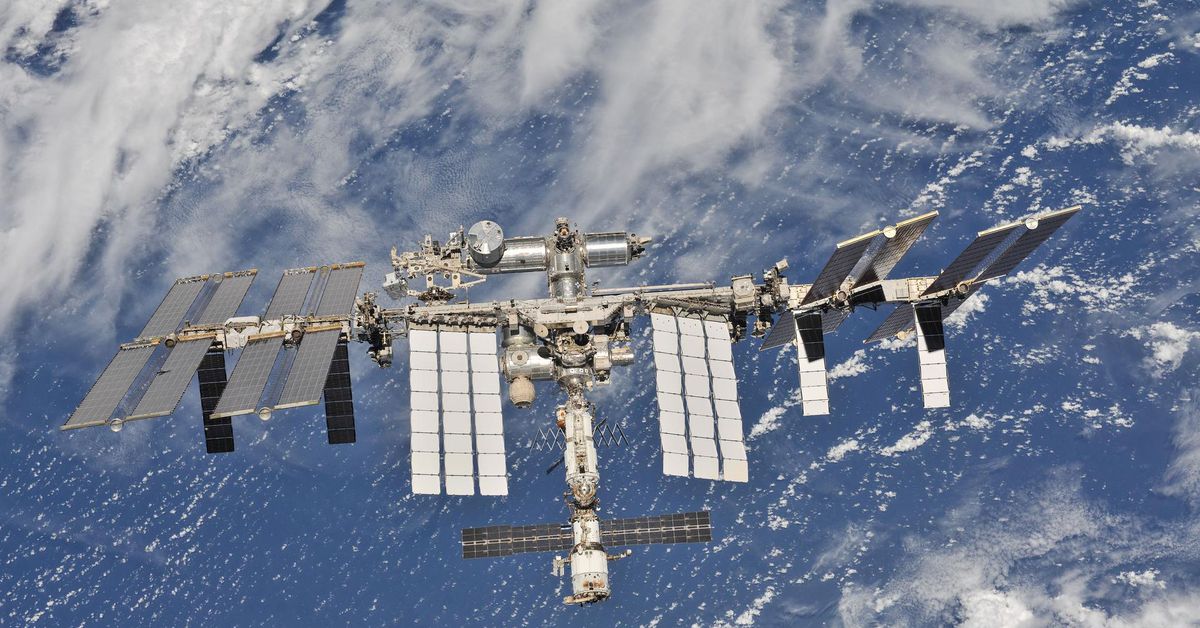
Today, NASA executives announced that the space agency will open up the parts of the International Space Station to more commercial opportunities — allowing companies unprecedented use of the space station’s facilities, including filming commercials or movies against the backdrop of space. NASA is also calling on the private space industry to send in ideas for habitats and modules that can be attached to the space station semi-permanently.
A new interim directive from NASA allows private companies to buy time and space on the ISS for producing, marketing, or testing their products. It also allows those companies to use resources on the ISS for commercial purposes, even making use of NASA astronauts’ time and expertise (but not their likeness). If companies want, they can even send their own astronauts to the ISS, starting as early as 2020, but all of these activities come with a hefty price tag.
It’s a significant turn for NASA, which has long been antagonistic toward commercializing the ISS. While Russia is more open to ads and branding on the ISS (as it was with the Mir space station), and has sent tourists to the ISS before, NASA has strictly prohibited the use of its side of the International Space Station for commercial purposes. Up until now, any company wishing to send products to the ISS had to show that there was some educational component to the undertaking or that it revolved around some kind of technology demonstration. No purely commercial projects are allowed to be sent to the ISS, and NASA astronauts are even prohibited from working on experiments if there’s the possibility the research will be used to make a profit.
But in August, NASA administrator Jim Bridenstine formed a committee to look into ways of opening up the space agency to commercialization, arguing that doing so could provide new sources of revenue and name recognition for NASA. “Is it possible for NASA to offset some of its costs by selling the naming rights to a spacecraft or the naming rights to its rockets?” Bridenstine said to a group of advisors for NASA in August. “I’m telling you there is interest in that right now. The question is: is it possible? And the answer is I don’t know, but we need somebody to give us advice on whether or not it is.”
Additionally, NASA leadership has made it clear that the space agency wants to eventually transition control of the International Space Station and its region of space, low Earth orbit, to the private sector someday. That way, NASA can pursue much more ambitious missions, like the agency’s goals of building a new space station around the Moon and sending humans back to the lunar surface. In 2018, the president’s budget request called on ending direct funding for the ISS by 2025 and ceding operations of the orbiting lab to private companies. The White House is no longer pursuing that deadline of 2025 due to pushback from lawmakers, but NASA is still looking to jumpstart the private space industry’s takeover of low Earth orbit.
To help achieve this, NASA commissioned 12 companies to study ways of establishing a heavy commercial presence in this region of space. Each company detailed ideas for new private space habitats that could either be attached to the ISS or fly free in low Earth orbit. Such platforms could serve as “destinations” for research and even private visitors, according to NASA, generating revenue and opening up entirely new business models. NASA did admit that the barrier to entry is still high, since transporting people and cargo to space is quite expensive. But the space agency is still moving forward with commercialization based on what these studies found.
“You see the space agency looking at it probably another 10 years of the ISS being in orbit, and saying, ‘Okay, how do we move forward?’” Jeff Manbar, the CEO of Nanoracks, which coordinates shipments and experiments on the ISS, tells The Verge. “Let’s put our toes in the water on purely commercial projects. Let’s begin to allow tourism. And let’s begin to have the first commercial platforms supported by NASA. And so it’s a very important step forward. This is the beginning of a new chapter.”
Using the space station will come with some restrictions. Only 175 kilograms per year in commercial cargo can be sent to the ISS, and NASA crew will only dedicate 90 hours a year to commercial activities. Private astronaut missions to the ISS are limited to 30 days, and NASA has released a list of approved commercial activities that the agency will allow onboard. Additionally, using the space station’s facilities will be incredibly expensive. It’ll cost $11,250 per astronaut per day to use the life support systems and toilet, and $22,500 per day for all necessary crew supplies, like food, air, medical supplies, and more. Even power will cost $42 per kilowatt hour.
Developing...
https://www.theverge.com/2019/6/7/18656280/nasa-space-station-private-astronauts-commercial-business
2019-06-07 14:13:04Z
CAIiEIpOQSG55qGQHtjL1kRvbD4qFwgEKg4IACoGCAow3O8nMMqOBjD92egF
Bagikan Berita Ini














0 Response to "NASA is opening the ISS to commercial business and more private astronauts - The Verge"
Post a Comment